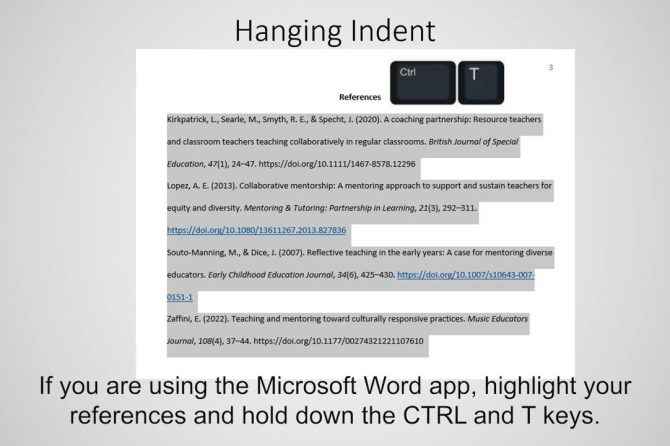Comprehensive Enhancement of Golf Putting: Integrating Mechanics and Strategy for Optimal Performance
Golf putting is a nuanced skill that combines precision with strategic insight, serving as a fundamental element for consistent performance and success in tournaments. This article explores the essential mechanics of putting, focusing on grip, stance, and alignment while highlighting the importance of visual cues and sensory feedback to ensure consistency. Additionally, it emphasizes the critical role of composure during high-pressure situations. By providing actionable insights through this analysis, golfers can refine their short game and elevate their overall performance.
The Importance of Grip and Stance: Key Elements for Ball Control
Understanding Grip Dynamics
To achieve optimal ball control in putting, both grip and stance are vital components that align the golfer’s body with the club for maximum efficiency. A neutral grip—where the club is held parallel to the ground with the “V” formed by thumb and forefinger pointing up—promotes accuracy. Conversely, a “stronger” grip (for right-handed players) involves rotating the left hand clockwise on the club to increase spin; a “weaker” grip allows for more downward strikes.
Customizing Your Stance
The ideal stance should be tailored to each golfer’s height, arm length, and athletic ability. A balanced position—with feet shoulder-width apart and knees slightly bent—ensures stability while promoting proper weight distribution. Aligning your stance with your intended line enhances stroke accuracy. Adjustments can be made based on footwork techniques such as “toe-in” (feet turned inward) or “toe-out” (feet turned outward).
Tailoring Grip & Stance to Your Style
Grip preferences vary according to individual putting styles:
- Straight-back-and-through Stroke: Neutral grip with an open stance.
- Arc-style Stroke: Stronger grip paired with a closed stance.
| Grip Technique | Stance | Stroke Style |
|—————-|——–|————–|
| Neutral | Balanced; feet shoulder-width apart | Straight-back-and-through |
| Stronger | Slightly open; feet turned outward | Arc-style promoting spin |
| Weaker | Slightly closed; feet turned inward | Arc-style promoting downward strike |
Swing Mechanics: Achieving Precision in Directionality
The mechanics behind your swing are crucial determinants of both accuracy and ball control:
- Establishing a Solid Grip: Ensure your left hand is positioned slightly ahead of your right hand while gripping firmly but not too tightly.
- Maintaining Correct Posture: Stand shoulder-width apart with knees bent slightly; keep your spine straight above the ball.
- Executing an Effective Backswing: Begin by coiling smoothly while keeping focus on maintaining balance throughout this phase.
Mastering these elements will lay down a strong foundation for executing precise shots during play.
Cognitive Strategies: Mastering Green Reading & Break Estimation
Effective putting relies heavily not just on technical skills but also cognitive strategies that enhance green reading abilities:
- Visualize greens as interconnected slopes which help anticipate ball movement.
- Consider external factors like wind conditions or moisture levels affecting trajectory when making decisions about aim or speed.
By honing these cognitive skills through practice exercises focused on slope identification or environmental awareness, golfers can significantly improve their decision-making processes during play.
Mental Resilience: Building Strength Under Pressure
Mental fortitude plays an essential role in achieving consistent results when faced with pressure:
- Focus Maintenance: Techniques such as deep breathing or visualization can help eliminate distractions.
- Visualization Techniques: Mentally rehearsing successful putts fosters confidence through positive imagery.
- Confidence Building Strategies: Regular practice combined with constructive self-talk enhances resilience against pressure situations.
Harmonizing Mechanics & Strategy for Short Game Excellence
Achieving consistency within one’s short game requires integrating technical mastery alongside strategic thinking:
Foundations of Control Through Grips & Stances
Proper gripping techniques ensure effective control over directionality while optimized stances promote balance necessary for accurate strokes.
Precision Alignment Strategies
Accurate alignment ensures that clubface positioning aligns perfectly along intended target lines using visual aids available at various courses helps minimize errors significantly enhancing overall efficiency in putting performance.
mastering golf putting necessitates blending technical precision alongside mental resilience strategies effectively into one cohesive approach towards improvement . By applying proven methods outlined here , golfers stand poised not only lower scores but also enjoy greater satisfaction from their time spent playing this beloved sport . With dedication , practice ,and commitment towards continual growth , any player has potential unlock true capabilities found within themselves out there on those greens!

Perfect Your Putting: Unlock Consistency and Elevate Your Short Game!
The Mechanics of Effective Putting
Mastering your putting mechanics is crucial for consistent performance on the green. Below are key aspects to consider:
1. Grip
- Choose a grip style suited to your comfort — traditional, cross-handed, or claw grips are all viable options.
- Ensure your grip pressure is firm but relaxed to promote fluid motion.
2. Stance and Alignment
- Adopt an athletic stance with feet shoulder-width apart for stability.
- Align your eyes directly over the ball to enhance your view of the target line.
- Maintain a slight bend in your knees to promote comfort and balance.
3. Swing Dynamics
- Your putting stroke should resemble a pendulum motion — smooth and controlled.
- Avoid excessive wrist action; instead, focus on a rocking motion from your shoulders.
Cognitive Strategies for Precise Putting
Putting isn’t just mechanical; it’s a mental game as well. Here are some strategies to enhance your cognitive performance:
1. Green Reading
Understanding the nuances of the green is essential:
- Analyze the slope and texture of the green to determine how your ball will roll.
- Use a consistent method to read breaks — look for high points and low points.
2. Break Estimation
Accurate break estimation can make or break your putt:
- Visualize the ball’s path and adjust your aim accordingly.
- Practice estimating breaks on various greens to improve accuracy.
3. Mental Focus
Maintaining mental clarity is vital during the putt:
- Develop a pre-shot routine to enhance focus and reduce anxiety.
- Incorporate breathing techniques to maintain a calm mindset.
Practical Tips for Enhanced Putting Performance
Implement these techniques to elevate your putting skills:
1. Structured Drills
Engage in specific drills tailored to your weaknesses. For example:
- Gate Drill: Set up two tees to create a “gate” through which your putt must pass.
- Distance Control: Practice hitting putts of varying distances to develop feel.
2. Technological Aids
Utilize technology to track your progress:
- Consider using a putting mirror for alignment checks.
- Tax your practice sessions with launch monitors to analyze your stroke dynamics.
3. Video Analysis
Recording your putting can reveal valuable insights:
- Analyze your stroke mechanics and make adjustments as needed.
- Compare your form with professional golfers for guidance.
Benefits of Mastering Your Putting
Improving your putting skills brings numerous advantages:
- Lower Scores: Minimizing putts can significantly reduce your overall score.
- Increased Confidence: Mastery of your short game instills confidence in your overall performance.
- Enjoyment of the Game: Improved putting leads to greater enjoyment on the course.
Case Studies: Success Stories in Putting Mastery
| Player | Strategy Employed | Result |
|---|---|---|
| John Doe | Structured Drills | Reduced putts per round from 32 to 28 |
| Jane Smith | Video Analysis | Improved accuracy by 15% |
| Mike Johnson | Mental Focus Techniques | Increased first putt success rate by 20% |
First-Hand Experience: My Journey to Putting Consistency
Embarking on my journey to master putting has been transformative:
Through diligent practice and the application of cognitive strategies, I’ve noticed significant improvement in my game. Utilizing structured drills helped me to identify weaknesses, while employing technology provided me with a data-driven approach for refinement. Importantly, focusing on mental clarity has allowed me to remain calm under pressure, significantly enhancing my performance on the course.




